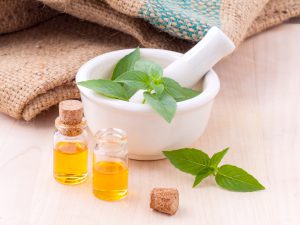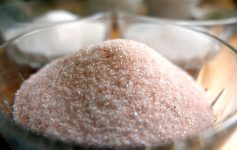
I am currently working on a doozy of an article for Natural Path. It provides a more comprehensive overview on the topic of allergies and essential oils and is a continuation of my original two-part article on this subject. This series details the various factors that sets one up to have an allergic response to begin with and specifically in regards to essential oils. I’m excited about it and hope it will be another resource to guide people in the safe use of essential oils. It should be released in the summer months, so stay tuned for my announcement!
In this blog, I will discuss an important reaction to essential oils that could be confused with an allergy. It is related to a negative response to a class of compounds, phenols, found in various essential oils. It results from a metabolic block in a certain enzyme, PST, making it different from an immune hypersensitivity reaction. Here’s the details below.
The Power of PST
PST stands for phenol sulfur-transferase. It is responsible for breaking down phenols for their use in the body. It is also an important enzyme for detoxifying harmful substances. Some people may respond negatively to phenols because they have an inadequate supply of available sulfate in order to “fuel” this pathway.
The result of an inability effectively process this class of compounds could create many unwanted effects due to their buildup in the system. Phenols are present in foods naturally, and those who tend to have a more toxic burden and have this “metabolic block”, may have more adverse effects when exposed to phenols in essential oils.
Thankfully, a solution is available. It is to help the body rid of some of the toxins that have built up in the system and then provide it with a substrate to assist with the pathway.
As mentioned earlier, sulfur plays an important role in detoxification, and people who struggle with toxicity will often have a deficiency in the sulfation pathway. As explained in Enzyme Stuff:13
“… [M]ost people with autism conditions have a deficiency in a key detoxification pathway. The pathway involves using sulfur in the form of sulfate (known as sulfation). The enzyme involved is phenol sulfur-transferase (PST), but the problem is thought to hinge on an inadequate supply of usable sulfate ions, not the metabolic enzyme itself.
Dr. [Rosemary] Waring found that most children on the autism spectrum are very low in sulfate and may be as low as 15 percent of the amount in neurologically typical people. People with low or no ability to convert compounds to sulfate have problems handling environmental chemicals, some medications, and even some chemicals produced within the body.
Furthermore, the article continues:
There is a cumulative effect. When the phenols start backing up in the system, it can cause a myriad of negative reactions. Symptoms of phenol intolerance include night waking, night sweats, irritability, eczema and other skin conditions. The symptoms of phenol intolerance and yeast may be very similar because they both involve the body trying to deal with toxins.”
What’s a Potential Solution?
If someone is sensitive to phenols and has an unwanted response to them, I usually implement the following plan in sequential order.
1. I suggest initially backing off the use of oils high in phenols. Here’s a list of some phenol-containing oils from yleo-oils.com (http://www.yleo-oils.com/chemical.htm):
- Anise (90%)
- Clove (80%)
- Basil (70%)
- Oregano (70%)
- Thyme (48%)
- Calamus or Cane (30%)
- Cinnamon (25%)
- Cassia (8%)
- Eugenol may be found in clove and cinnamon oil.
- Thymol is found in thyme and may not be as caustic as other phenols.
- Carvacrol may be found in oregano and savory.
- Others in the phenol family include methyl eugenol, methyl chavicol anethole, safrole, myristicin, and apiol.
2. We then discuss the importance of cleansing and decreasing the body burden. You can read more about my approach here.
3. Finally, we enhance this pathways ability to detoxify with supplying some more sulfur sources, a little molybdenum, Epsom salts, and/or MSM.
These above steps can help some people to be less reactive to phenols.
Why not just avoid phenols?
According to a 2003 article:
Sulfate conjugation by phenolsulfotransferase (PST) enzyme is an important process in the detoxification of xenobiotics and endogenous compounds… These observations suggest that antioxidant phenolic acids might alter sulfate conjugation.
Basically, that’s a lot of scientific-speak to say, “because phenolic acids may have positive benefits to human health and can help with detoxification” (Find out more benefits of phenols here.)
Final Thoughts
Consideration of why someone may have a reaction to anything is an important part of treating the cause, rather than continuing to chase symptoms or blame the trigger. In the case with those sensitive to phenols, it may just lead to more options in food and essential oils in the future.
Remember my blog on eating wheat? Recently, the original two-part series for Natural Path has been published and is now available! Read it here.
References:
Weinshilboum, RM. Phenol sulfotransferase in humans: properties, regulation, and function [abstract]. Fed Proc [online]. 1986 Jul;45(8):2223-8.
Sundaram RS, Szumlanski C, Otterness D, van Loon JA, Weinshilboum RM. Human intestinal phenol sulfotransferase: assay conditions, activity levels and partial purification of the thermolabile form. Drug Metab Dispos. 1989 May-Jun;17(3):255-64.
Dr. Mercola. The Benefits of Sulfur — Why You Need Epsom Salt, Broccoli and MSM. Mercola.com. November 28, 2016. http://articles.mercola.com/sites/articles/archive/2016/11/28/sulfur-benefits.aspx
Yeh CT, Yen GC. Effects of phenolic acids on human phenolsulfotransferases in relation to their antioxidant activity. J Agric Food Chem [online]. 2003 Feb 26;51(5):1474-9. https://www.ncbi.nlm.nih.gov/pubmed/12590501



